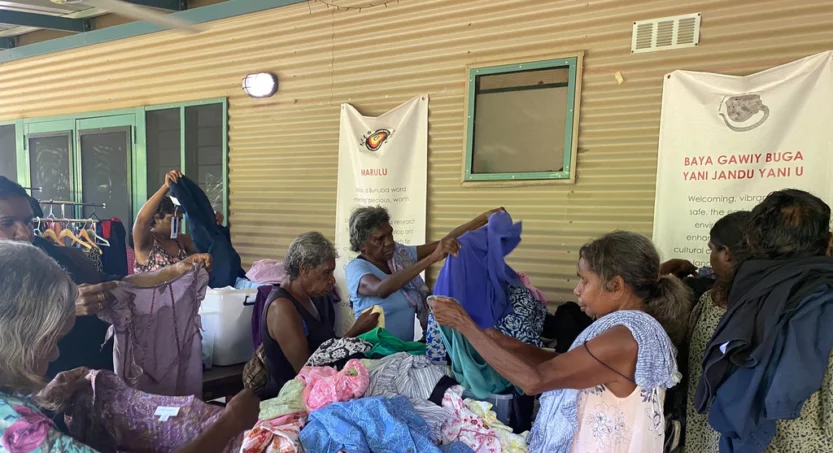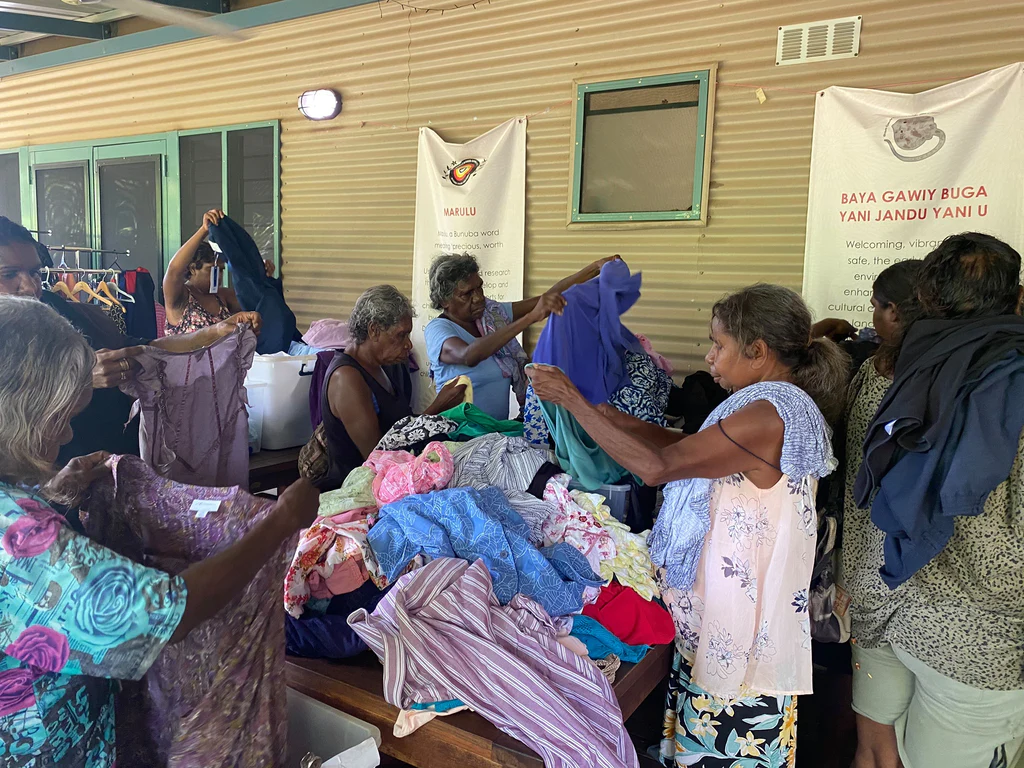When a small idea becomes a fashion statement for remote communities

It started with a Facebook post from a man who had connections with the remote Fitzroy Valley in Western Australia. He shared an idea among his Facebook friends to source dresses for the grandmothers of the Valley. The plan evolved in to the 1000 Dresses Campaign and was run by Marninwarntikura Women’s Resource Centre at Fitzroy Crossing.
And here’s where it becomes extraordinary: the 1000-dress milestone quickly became redundant.
Within months, the Marninwarntikura Facebook post had reached more than 115,000 people, with many individuals and organisations sharing and supporting the project. The clothes kept coming. And coming. And haven’t stopped.
The local post office was inundated and called the resource centre twice a day to collect the ever-growing pile of clothes that came from every Australian state and territory and even from Canada and the UK. Marninwarntikura staff worked weekends, unpacking, and sorting the clothes.
Sue Thomas, Strategic Priority Lead at Marninwarntikura, says they stopped counting the clothes when they got to 10,000 dresses. And they didn’t even count the skirts, the trousers, and shorts. Then there were clothes for the kids, and then the local men. There were second-hand clothes, new clothes, winter clothes, and high-end fashion garments. “There were some of the best-dressed girls in the Kimberly,’’ Sue says. There’s now a whole room at the Resource Centre that’s full of clothes, for women, men, and kids.
It’s now almost two years since the project started and although the donations have slowed, there’s no sign that the supply of donated clothing is stopping any time soon. The remarkable response during the first months of the campaign coincided with the COVID-19 lockdowns, and it demonstrated to Sue how much people wanted to help.
“It was about giving to vulnerable people while in lockdown,’’ Sue says. “And people were really grateful to receive it. They loved it.’’
Isolation is one of the bywords of living in Fitzroy Valley. If you can get access to a car, it will take four hours to drive, east, to Broome where you might be able to find affordable clothing. Otherwise, it’s probably a selection of expensive cowboy shirts in one of the local shops.
The extensive donations meant there were garbage bags full of clothes that visitors to the Centre were able to take back to their communities for those who were unable to travel. Other communities, 300km away, were sent their own bags of clothes.
“These new dresses make the women feel really special,’’ Sue says. “The women are so proud of it. And all of its worn and shared around.’’
The Marninwarntikura Women’s Resource Centre’s role is to support women and their families in the Valley by encouraging safety and promoting well-being. It aims to foster leadership and financial independence. It’s a small organisation with a big vision, Sue explains, providing a range of activities, service, advocacy, and social enterprises under its roof. Although it has Federal and West Australian government funding, it also has a range of philanthropic supporters including the Kimberley Foundation, the Alannah and Madeline Foundation, The Ian Potter Foundation and Royal Far West.
The 1000 Dresses campaign, however, revealed something more profound: many of the donated clothes came with a donor’s message attached: some of them talked about enjoyable holidays spent travelling through the Kimberley, some about how much they had enjoyed working with Indigenous Australians, and others apologising for the way First Nations’ people have been treated. For the recipients of the clothes – and the messages – there was a deep gratitude, Sue says.
“This really shows the power of the collective,’’ she says. “It was a grassroots movement that started with that guy on Facebook and his 15 friends. Heaps of people came across it in different ways.’’
At its heart, the Campaign fostered deep engagement across the valley. Many women who hadn’t used Marninwarntikura Women’s Resource Centre’s services turned up to choose some clothing.
